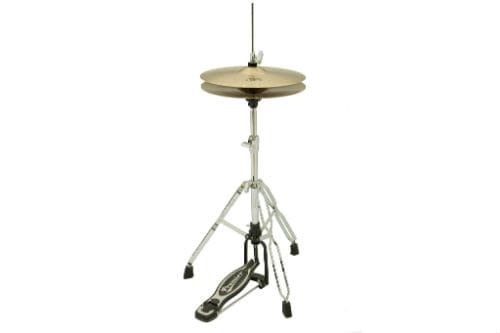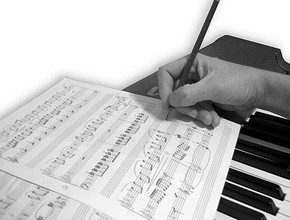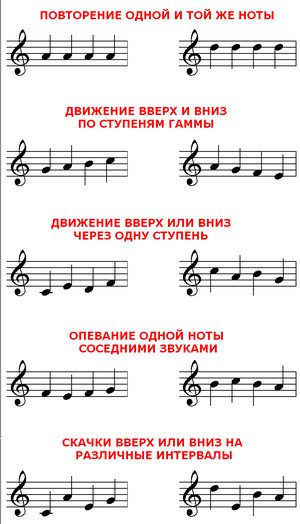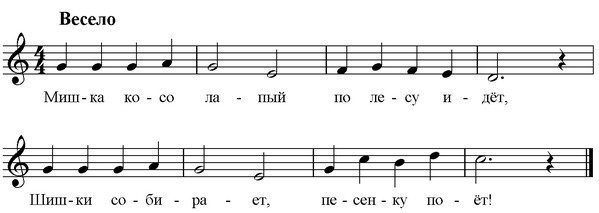
If you were given a homework assignment to compose music!
Contents
 From the letter: “My daughter is entering the third grade at music school: for the summer we were assigned to compose music in solfeggio. Could you tell me how we can help her?”
From the letter: “My daughter is entering the third grade at music school: for the summer we were assigned to compose music in solfeggio. Could you tell me how we can help her?”
Well, let’s try to suggest something! There is no need to be afraid of such a task – you need to complete it simply and correctly. It’s best to compose either a song or a small piece for the instrument we play.
We compose a song based on the words of a children’s poem
The easiest way is to compose a song. For it, we either compose the words ourselves (a small poem of 4 or 8 lines), or take any ready-made children’s poem, nursery rhyme, etc. For example, the well-known “A clumsy bear is walking through the forest…”.
Poem divide into phrases, just like it goes line by line or half a line. One phrase or line of a poem is equal to one musical phrase. For example:
Bear-toed
Walking through the forest
Cones collects,
Sings songs.
Now we arrange all this musically. Choose any major key, if the content of the song is cheerful and bright (for example, C major or D major), or some minor key if the poem is sad (for example, D minor, E minor). We put key signs, farther choose the size (2/4, 3/4 or 4/4). You can immediately outline the bars – four bars on one line of music. And also, based on the nature of the text, you can also immediately come up with pace – it will be a slow song or a fast, cheerful one.
And when we have decided on such simple things as mode, key, tempo and size, we can directly proceed to inventing a melody. And here we need to take into account two main points – the rhythm of the melody and what pitch of sounds the melody will be composed of.
Options for melodic development
Now we will show some examples of how the melodic line in your song can develop:

- repetition of the same sound or even a musical phrase;
- movement up the scale levels;
- movement down the scale steps;
- moving up or down one step at a time;
- various types of singing of one note by neighboring notes;
- jumps at any intervals (it’s not for nothing that you did them?).
It is not necessary to adhere to only one technique of melodic development throughout the entire song; you need to alternate, combine, and mix these techniques with each other.
You also need to make sure that the melodic movement in its direction was not homogeneous (that is, only down or only up). Simply put, if in one measure the melody moved upward (step by step or jump), then in the next measure we must either maintain the achieved height by repeating on one note, or go down or fill the resulting jump.
What note should you start and end the song with?
In principle, you can start with any note, especially if your music begins with an upbeat (remember what that is?). The main thing is that the first note belongs to the key that you initially chose. And also, if the first note is not one of the stable steps (I-III-V), then you need to place a note as soon as possible after it, which would be classified as stable. We must immediately show what key we are in.
And, of course, we have to finish the song on the tonic – at the first, most stable stage of our tonality – do not forget about this.
Options for rhythmic development
Here, for everything to work out as it should, we just carefully work through our text: put emphasis on each word. What will this give us? We learn which syllables are stressed and which are unstressed. Accordingly, we should try to compose music so that stressed syllables fall on strong beats, and unstressed syllables fall on weak beats.
By the way, if you understand poetic meters, you will easily understand the logic of musical rhythm – sometimes poetic meters can literally coincide with musical ones precisely by the alternation of stressed and unstressed syllables (beats).
So, here are several options for a rhythmic pattern for the melody of the song you are composing (as well as melodic techniques, they need to be combined):
- uniform movement of the same durations, one for each syllable of the text;
- chants – two or three notes per syllable of the text (most often the ends of phrases are chanted, sometimes also the beginnings of phrases);
- longer durations on stressed syllables and shorter durations on unstressed syllables;
- a beat when a poem begins with an unstressed syllable;
- rhythmic stretching of phrases towards the end (slowing down the movement at the end of phrases);
- using dotted rhythm, triplets or syncopation as needed.
What result can we get?
Well, of course, no one expects any masterpieces from a primary school music school student – everything should be quite simple, but tasteful. Moreover, this is your very first experience as a composer. Let it be a very small song – 8-16 bars (2-4 musical lines). For example, something like this:

The melody you composed needs to be beautifully rewritten on a separate piece of paper. It is advisable to select, draw or glue some beautiful thematic pictures to your essay. The same club-footed bear with cones. All! You don’t need anything better! An A in solfeggio is guaranteed to you. Well, if you absolutely want to reach the level of “aerobatics,” then you need to choose a simple accompaniment for your song on the piano, accordion, guitar or other instrument.
What other music can you compose?
Yes, you don’t have to compose a song. You can also write an instrumental piece. How to do it? In any case, it all starts with an idea, with an idea, with choosing a topic, coming up with a name, and not the other way around – first we composed it, and then we think about what to call this nonsense.
The topic can be related, for example, to nature, animals, fairy tales, books you have read, toys, etc. Titles can be, for example, the following: “Rain”, “Sunshine”, “Bear and Bird”, “A Stream Runs”, “Birds Sing”, “Good Fairy”, “Brave Soldier”, “Brave Knight”, “ The Buzzing of Bees”, “Scary Tale”, etc.
Here you will have to approach solving problems creatively. If there is a character in your play, then you have to decide how you are going to present him – who is he? what does it look like? what is he doing? what does he say and to whom? what is his voice and character like? what habits? The answers to these and other questions that you ask yourself need to be translated into music!
If your play is dedicated to some natural phenomenon, then at your disposal – means of musical painting, visualization: these are registers (high and loud or low and echoing?), and the nature of the movement (measured, like rain, or stormy, like the flow of a stream, or bewitching and slow, like the sunrise?), and dynamics (the quiet trills of a nightingale or the deafening roar of a thunderstorm?), and harmonic colors (tender pastoral consonances or sharp, harsh and unexpected dissonances?), etc.
Another approach is also possible in composing instrumental music. This is when you turn not to any specific images, but to quite famous dance genres. For example, you could write “Little Waltz”, “March” or “Children’s Polka”. Choose what you want! In this case, you will need to take into account the features of the chosen genre (they can be viewed in the encyclopedia).
Just as in the case of a song, when composing instrumental music, a great advantage for you can be the provided drawing in the theme of your music. It’s time for us to end this. We wish you creative success!
Read also – If you are given a homework assignment to make a crossword puzzle on music




